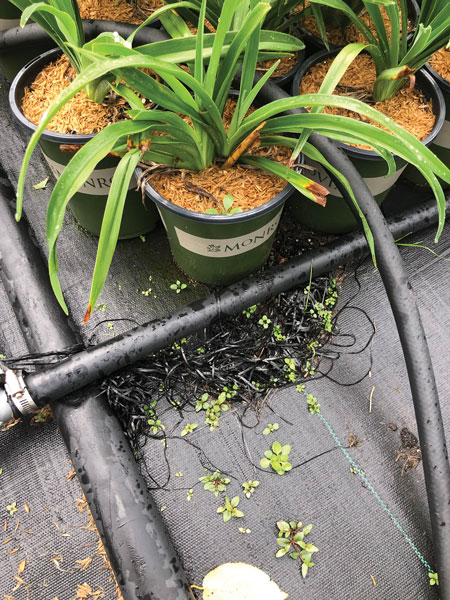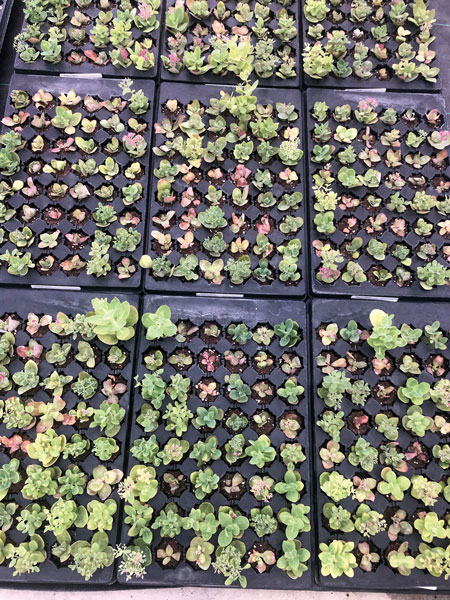2/1/2021
Starting Strong
Paul Pilon

It’s hard to believe the start of Spring 2021 is nearly here. One of my mid-winter tasks is to take the necessary and beneficial steps to ensure spring production gets off to a great start. Think of these procedures as the foundation of a skyscraper. If the foundation, or start of the season in this case, isn’t solid, the building or the start of the growing season will be shaky and not as solid as it should be.
Many growers take for granted the benefits of having a strong start, and when less-than-ideal conditions are present from the beginning, they often struggle to stay ahead of these issues throughout the crop or the entire spring season. A strong start likely has different meanings for different growers, but here’s a few methods I like to employ to get my growing season started off the right foot.
Sanitation, sanitation, sanitation
We frequently hear these words, but how many of us listen and practice good sanitation? Not only is sanitation the first line of defense against potential problems, but it’s the simplest and most cost-effective component of managing pests and negating cultural problems.
Many growers only implement sound sanitary practices at the beginning of the production cycle and I suppose that’s what I’m emphasizing in this article, but sanitation should be viewed as an ongoing task. Strive to maintain a clean growing environment from start to finish.
Pictured: Weeds in and around the production site not only harbor insect pests, diseases and viruses, but they can quickly spread onto nearby crops.
Cleaning & disinfecting
Sanitation essentially involves two key strategies: cleaning and disinfecting.
Cleaning involves physically removing existing pests or potential problems from within and around the growing area. The most common cleaning practices include removing all old growing mix and plant debris from the production site. Removing and managing weeds is another important practice that greatly reduces future issues with insects, diseases, viruses and, of course, more weeds. Identifying, rogueing and disposing of any diseased or dead plants from the crops is another important step to reducing future issues.
Don’t be like me when I was a kid and hide stuff out of sight under the bed—sweeping and washing with a hose isn’t sufficient and usually just moves dirt and diseases from one location to another. Clean means clean. Take the time and do it right. Use cleaning agents followed by disinfectants when cleaning greenhouses, production surfaces and tools.
Disinfecting involves applying anti-microbial agents such as quaternary ammonium compounds, hydrogen dioxide products or 10% solutions of household bleach to kill pathogenic organisms on surfaces. It’s important to disinfect floors, bench surfaces, plastic pots and trays, as well as tools and equipment between uses. Many growers provide foot mats and hand-washing stations containing disinfectants or anti-bacterial soaps at the entry points of the production areas to prevent pest organisms from entering.
There’s much to be said about the premise of starting clean and staying clean. Properly cleaning and disinfecting greenhouses at the beginning of and between crop cycles is an important aspect of pest management and preventing future problems.
Garbage in = Garbage out
 We’ve all heard the expression, “garbage in equals garbage out.” Be honest with yourself—how many times have you decided to plant starting materials that weren’t clean and healthy? In these instances, how many times did these known issues persist and have negative consequences with the crops?
We’ve all heard the expression, “garbage in equals garbage out.” Be honest with yourself—how many times have you decided to plant starting materials that weren’t clean and healthy? In these instances, how many times did these known issues persist and have negative consequences with the crops?
To prevent or lessen future issues, inspect all plant materials for pests, diseases, viruses, nutritional disorders and other issues before planting them into the final containers. If insects or diseases are found, treat them with an appropriate product before transplanting them or placing infected plants into the greenhouses. It’s easier said than done, but placing problem crops into “quarantine” while pre-existing problems are addressed is very useful. These steps will help ensure your crops are as clean as possible and will limit the number of outbreaks you’ll have to contend with later on.
Pictured: This is an extreme example, but I think you’ll agree that it’ll be very difficult to produce a uniform, problem-free crop when starting materials such as these are used.
A good, clean start = A strong finish
The key to consistently getting a strong start is to instill the mindset of cleanliness to your employees. Implement several simple, yet effective, sanitation strategies into your production plans and remain as clean as possible throughout the growing season. It’s easy to accomplish a high level of cleanliness when everyone’s on board. Lead by example.
Sounds simple, right? My challenge to you for the upcoming season is for you to make the proper preparations, practice good cleaning and sanitary procedures, use healthy, problem-free starting materials, maintain sound production practices, and most of all, enjoy the process. GT
Paul Pilon is a Technical Manager at OHP, Inc. and editor-at-large of the Perennial Pulse e-newsletter. Feel free to contact him with article topics or to address your production challenges. He can be reached at ppilon@ohp.com.